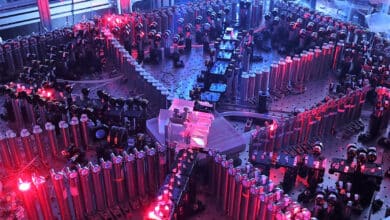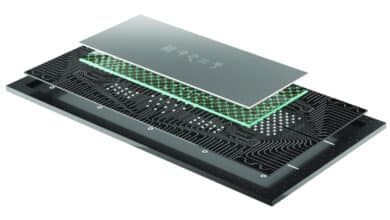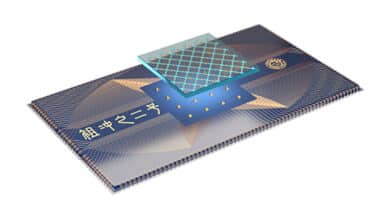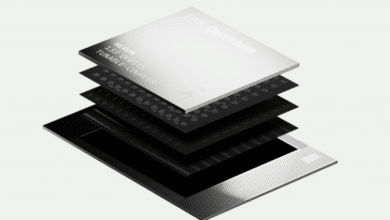DARPA’s Quantum Benchmarking Initiative (QBI) – 11 Companies Advance to Stage B
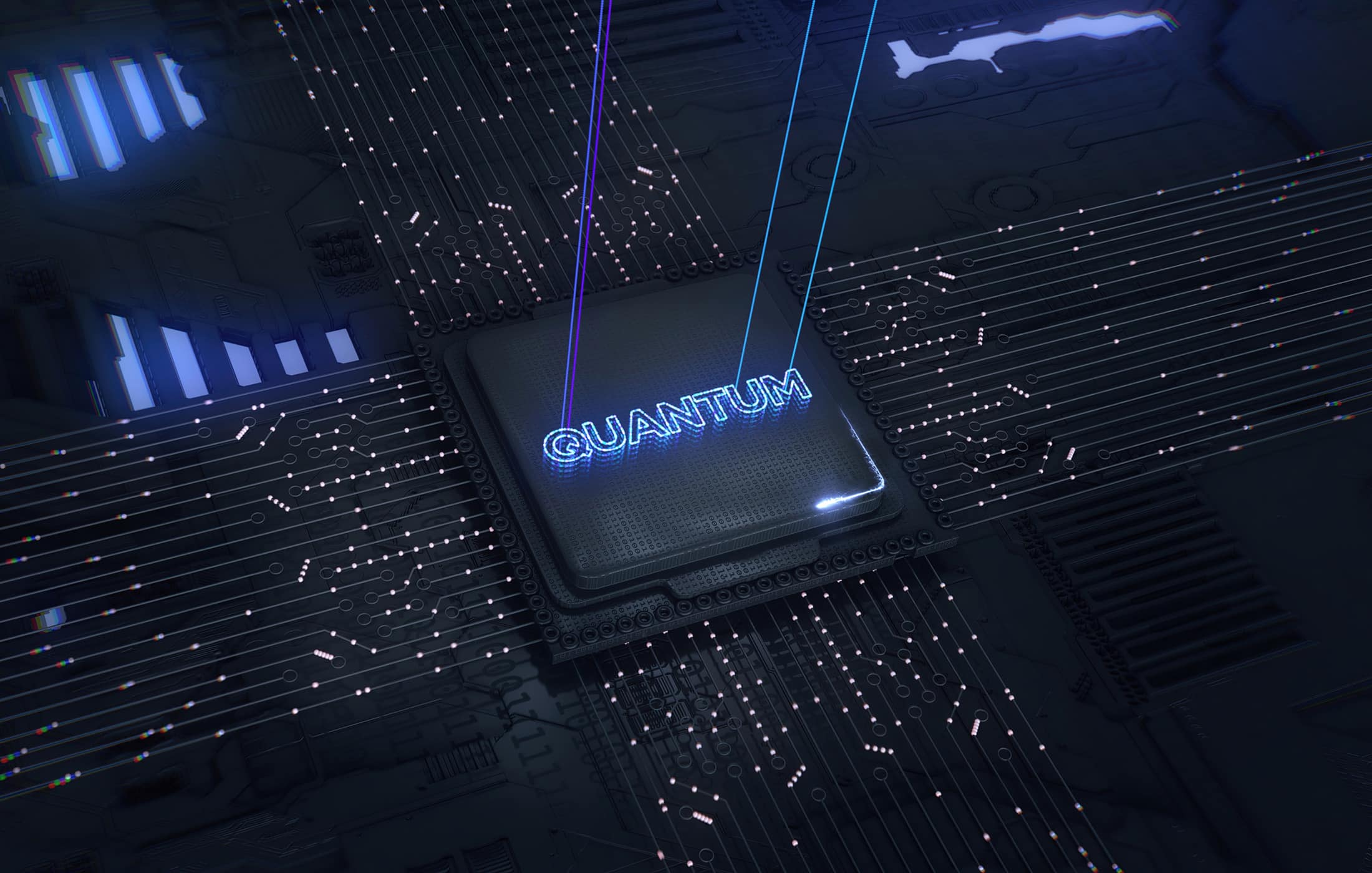
Table of Contents
What is QBI and Why Does It Matter?
The Quantum Benchmarking Initiative (QBI) is a DARPA-led program launched in 2024 to rigorously verify and validate the promise of quantum computing. Its ultimate goal is to determine whether any quantum computing approach can achieve “utility-scale” operation by 2033, meaning a quantum computer whose computational value exceeds its cost. In other words, QBI aims to find out if a useful, cost-effective quantum computer can be built much sooner than conventional predictions. This benchmarking effort is crucial because it sets objective milestones and third-party validation for an industry often awash in hype. It forces companies to demonstrate tangible progress toward a fault-tolerant, scalable quantum computer, rather than just promises.
QBI is structured in three stages:
- Stage A – Concept proposal: Companies describe a plausible architecture for a utility-scale quantum computer (a system that could be built in the near term and ultimately outperform classical systems in value/cost). Stage A concluded with DARPA evaluating these concept designs.
- Stage B – R&D blueprint: Selected teams must develop a detailed research and development plan, including technical requirements, risk mitigation strategies, and prototype roadmaps, to realize their proposed quantum architecture. This stage involves about a year of intensive R&D planning, with DARPA providing up to $15 million in funding per team to support this work. DARPA’s experts will scrutinize every aspect of these plans to assess if the approach is truly capable of “going the distance” to a large-scale, fault-tolerant machine.
- Stage C – Build and test: Finalists will work with an independent government verification & validation team to construct prototypes and test whether the envisioned quantum computer can be built and operated as intended. This is the real-world hardware benchmark: can the company actually deliver on the Stage A concept with proven hardware?
Benchmarking matters here because it provides a clear yardstick for progress in quantum computing. It’s not just about adding more qubits or publishing theory; QBI demands evidence that a design can scale and that it has a credible path to a useful outcome. As DARPA explains, the separate (but related) Quantum Benchmarking (QB) program works on defining the value of a quantum computer (i.e. “if a fully functioning quantum computer magically appeared, what new capabilities would it unlock?”). QBI complements this by assessing the feasibility and timeline of actually building such a machine. Together, these efforts ensure that government and industry can distinguish real breakthroughs from wishful thinking, focusing resources on approaches that can truly deliver a quantum advantage in practice. In short, QBI is about measuring progress and holding the field accountable to milestones on the road to a revolutionary technology.
November 2025 Update: Eleven Companies Progress to Stage B
On November 6, 2025, DARPA announced the first cohort of companies that have successfully completed Stage A and are advancing to Stage B of QBI. This announcement, quietly reflected on DARPA’s official QBI program webpage and subsequently picked up by the press on Nov. 7-8, 2025, marks a significant down-selection of participants as the program moves from conceptual proposals to concrete R&D planning.
Stage A Recap: Earlier in 2025 (April), DARPA had selected roughly 18 companies for Stage A of QBI, representing a broad mix of quantum tech players – from giants like IBM, Google, and Honeywell/Quantinuum, to startups like Atom Computing and Oxford Ionics. About 15 of these were publicly disclosed at the time, with a few more finalized by mid-year. Over a six-month period, these companies worked with DARPA to characterize their approach to a utility-scale quantum computer and demonstrate a plausible path forward.
Stage B Selection: Now, 11 companies have been selected to enter Stage B. They are (in alphabetical order):
- Atom Computing – (Boulder, CO) – Neutral-atom qubit arrays
- Diraq – (Sydney, Australia & Palo Alto/Boston) – Silicon CMOS spin qubits
- IBM – (Yorktown Heights, NY) – Modular superconducting processors
- IonQ – (College Park, MD) – Trapped-ion quantum computing
- Nord Quantique – (Sherbrooke, Canada) – Superconducting qubits with bosonic error correction
- Photonic Inc. – (Vancouver, Canada) – Optically-linked silicon spin qubits (distributed quantum computing)
- Quantinuum – (Broomfield, CO) – Trapped-ion QCCD architecture
- Quantum Motion – (London, UK) – Silicon MOS-based spin qubits
- QuEra Computing – (Boston, MA) – Neutral-atom qubits
- Silicon Quantum Computing (SQC) – (Sydney, Australia) – Precision donor atom qubits in silicon
- Xanadu – (Toronto, Canada) – Photonic quantum computing (continuous-variable photons)
These 11 firms span five distinct quantum hardware paradigms, reflecting the field’s diversity and uncertainty. DARPA deliberately advanced a “diverse portfolio of qubit technologies” to Stage B, including neutral atoms, trapped ions, superconducting circuits, silicon spin qubits, and photonic systems. Each approach has its own strengths and challenges, and no single architecture dominates today’s quantum landscape. By supporting multiple radically different designs in parallel, DARPA is essentially hedging bets and ensuring that if a breakthrough path to an industrial-scale quantum computer exists, QBI will find it – no matter which technology provides the answer.
Notably, some high-profile Stage A participants are not in this initial Stage B list. Companies like Google, Rigetti, and HPE participated in Stage A but were not announced in Stage B (at least not yet). DARPA clarified that additional teams may be added to Stage B later on staggered timelines, once their contracts are finalized. In other words, the door isn’t closed – some teams are still under evaluation or negotiation. (For example, Oxford Ionics and Atlantic Quantum were acquired by larger players during Stage A, which impacted how they appear in the roster.) But as of Nov 6, the 11 listed above are the first confirmed to move forward.
“Not a Competition” – How QBI Differs from Tech Contests
DARPA is at pains to emphasize that QBI “is not a competition to narrow the field to a few ‘winners.’” Unlike typical prize challenges, QBI could advance multiple winners – or even conclude that none of the approaches meet the bar by 2033. “Each company’s approach is evaluated on its own merits against the utility-scale objective,” the agency notes. The outcome might be multiple successes, a single breakthrough, or no one reaching the finish line if the tech just isn’t ready. This open-ended approach underscores QBI’s purpose: it’s a benchmarking and risk assessment exercise, not a race to claim a trophy.
By benchmarking each design against rigorous criteria, DARPA aims to provide a “thorough, unbiased evaluation” of the true potential and timeline for each path to quantum computing. This helps avoid both false negatives (dismissing a promising technology prematurely) and false positives (chasing an approach that won’t pan out). As QBI Program Manager Dr. Joe Altepeter explained, during Stage B “we’ll thoroughly review all aspects of their R&D plans to see if they can go the distance – not just meet next year’s milestones – and stand the test of trying to build a transformative technology on this kind of a timeline.”. The DARPA team will stress-test the companies’ roadmaps: Are their qubit fidelity and scaling assumptions realistic? Have they identified the key engineering challenges (e.g. error correction, control electronics, fabrication issues) and a path to solve them? What prototypes will prove out critical steps? Stage B demands answers to these questions.
Crucially, DARPA also insists it will “do all these evaluations without slowing the companies down.” The agency doesn’t want to bog down progress; rather it seeks to augment and audit the companies’ efforts. Think of QBI as both a support system and a checkpoint – DARPA provides funding and expertise, but also continuously checks that each performer’s approach remains viable on the 2033 horizon.
From a broader perspective, benchmarking in quantum computing is vital because the field lacks standard performance metrics analogous to classical computing’s Moore’s Law or FLOPS. There is ongoing debate about how to measure “quantum advantage” or utility. By setting a concrete yardstick (utility-scale by 2033, with specific intermediate deliverables), QBI is effectively defining what success looks like and how to measure it. This brings much-needed clarity and accountability. It also helps the U.S. government plan for a post-NISQ (Noisy Intermediate-Scale Quantum) future: QBI will inform policymakers which approaches are likely to deliver a strategic advantage, and roughly when, so that agencies can align their quantum investments and security preparations accordingly.
Industry Reactions and Company Perspectives
The Stage B announcement is big news for the companies involved, and many of them have celebrated it as validation of their technology. Several firms issued press releases on Nov 6-8, 2025 highlighting their selection and what it means:
- IBM (superconducting qubits) welcomed the news as “a firm validation of IBM’s approach to delivering a large-scale, fault-tolerant quantum computer”. Jay Gambetta, IBM’s VP of Quantum, noted that IBM has “publicly laid out our comprehensive roadmap to scale quantum computers towards fault-tolerance”, and said the company looks forward to DARPA’s unbiased review of strategies across the field. In IBM’s view, advancing to Stage B affirms that its approach – which includes modular quantum processors and efforts like the IBM Quantum System Two – is on the right track in the eyes of third-party experts.
- IonQ (trapped-ion qubits) likewise touted its Stage B selection as evidence of IonQ’s “demonstrated quantum capabilities and […] pioneering work on real-world applications.” IonQ CEO Niccolò de Masi said, “With commercial deployments of IonQ systems worldwide – and availability on all three major cloud platforms – IonQ is uniquely positioned to contribute practical insights and technical advancements to [QBI].”. In other words, IonQ brings a very application-focused perspective, already working on use cases (like drug discovery, logistics optimization, etc.) that require scaling up. As part of QBI, IonQ will help define what “utility-scale performance” really means in terms of concrete problem-solving.
- QuEra Computing (neutral-atom qubits) emphasized the funding and momentum that Stage B provides. Under QBI Stage B, QuEra stands to receive “up to $15M over 12 months” to execute its R&D plan. CEO Andy Ory said they were “honored that DARPA’s experts determined our [neutral-atom] platform merits continued investment after close collaboration during Stage A.” QuEra frames its mission as “putting quantum to work for HPC centers, government programs, and enterprise innovators, while accelerating the transition from ‘one day’ to ‘Day One.’” The company highlighted that neutral atoms offer a path to highly scalable, energy-efficient quantum processors, citing recent achievements like multi-thousand atom arrays and error-correction demonstrations as evidence that the science is rapidly moving “from promising to practical.”.
- Photonic Inc. (distributed silicon-spin qubits) noted that the Stage A review let them showcase “the promise of our distinctive architectural approach to solve one of quantum computing’s formidable challenges: scaling beyond single nodes.” Dr. Stephanie Simmons, Photonic’s Chief Quantum Officer, said Stage B now shifts focus “from the underlying theory to the practical path to building a scalable quantum computer.” Photonic’s architecture uses optical links to connect many silicon-based quantum processors, aiming for a modular and networked quantum computer. Their progression to Stage B indicates DARPA sees potential in this “entanglement-first” distributed approach to reach large scale.
- Quantum Motion (silicon spin qubits in CMOS) underscored that its strategy leverages the existing silicon chip industry. “The clearest path to practical, large-scale quantum computing is through silicon,” said Quantum Motion CEO James Palles-Dimmock. By using standard CMOS manufacturing processes (the same used for classical microchips), Quantum Motion aims for easier scalability. Being one of the 11 chosen teams, they say, “provides the kind of technical scrutiny and collaboration that are essential for this field,” and they welcome the chance to prove that a silicon-based architecture can achieve fault-tolerant utility at scale. This reflects how QBI is fostering cross-pollination between cutting-edge quantum tech and proven classical engineering techniques.
- Quantinuum (trapped-ion, merged from Honeywell & Cambridge Quantum) pointed to its robust roadmap. In Stage A, Quantinuum delivered a concept design for a full-scale system called “Lumos,” and being selected for Stage B “recognizes the strength and maturity of our roadmap,” according to CEO Rajeeb Hazra. Quantinuum has publicly planned a fault-tolerant machine (“Apollo”) by 2029, and now “Lumos” extends into the 2030s to meet DARPA’s 2033 goal. During Stage B, DARPA’s Test & Evaluation team will rigorously review Quantinuum’s R&D plan for Lumos, validating technical assumptions and scaling plans. Quantinuum’s announcement also noted the company just deployed a new generation system (“Helios”) that has demonstrated record fidelity and even tackled simulations of high-temperature superconductivity – hinting that they are already aligning near-term progress with long-term goals.
Overall, the companies view QBI Stage B as both validation and an opportunity. It’s validation that an authoritative third party (DARPA) believes their approach is promising enough to invest further in. And it’s an opportunity to collaborate closely with DARPA experts, refine their strategies, and potentially secure a path to federal adoption if they succeed. For smaller startups like Nord Quantique (focused on error-corrected superconducting qubits) or Diraq (spinning off from academic work on silicon qubits), making it to Stage B can significantly raise their profile and credibility. Even large firms like IBM and Silicon Quantum Computing (SQC) note that QBI’s objective review is a healthy process for the industry: it keeps everyone honest and pushes teams to firm up their engineering roadmaps in a transparent way.
Next Steps: A Year of Rigorous Roadmapping and Testing
With Stage B now underway, these 11 teams enter a critical year-long phase. By late 2026, we can expect DARPA to evaluate which (if any) of these teams have delivered sufficiently credible R&D plans to merit moving to Stage C (the final phase). Stage C will involve building prototype systems or critical subsystems and subjecting them to real benchmark tests by an independent government team. Essentially, Stage C asks: “Can you actually construct the machine you proposed, and does it perform as intended?”.
It’s important to note that QBI is ongoing and adaptive. DARPA indicated that more companies might join Stage B later as evaluations continue. Conversely, not all Stage B participants are guaranteed to advance further; each must earn it by hitting their milestones and proving their concept’s viability under scrutiny. The QBI program runs in parallel with other U.S. government quantum efforts (for example, NSF and DOE research centers, NIST’s quantum standards work, and the earlier DARPA US2QC program). In fact, QBI is an expansion of DARPA’s Underexplored Systems for Utility-Scale Quantum Computing (US2QC) program, which had already been investigating unconventional approaches. QBI takes this further by engaging more industry players and adding the structured benchmarking framework.
For the broader quantum computing community, this Stage B down-select is a signal of which technologies are trending in the right direction. The mix of companies is telling: multiple superconducting and ion-trap efforts (which are more mature), a strong showing of silicon-based approaches (which promise scalability), neutral atoms gaining validation as a dark horse, and even photonic quantum computing in the mix. The fact that DARPA did not eliminate entire categories but rather picked the leading contenders in each category suggests a portfolio strategy: it’s still too early to declare a winning qubit, so support the best of each and see which (if any) can hit the performance/cost target by 2033.
Benchmarking, in summary, is the backbone of QBI’s significance. By the end of this process, DARPA hopes to have a clear answer to: Can quantum computing deliver practical value on a reasonable timeline, and if so, which approach (or approaches) will get us there? The November 2025 announcements show that progress is being made – conceptual ideas have turned into funded R&D blueprints – but also that the clock is ticking for these companies to prove themselves. In the words of DARPA’s Altepeter, QBI is about seeing who can “stand the test of trying to build a transformative technology on this kind of a timeline.”. The next year will go a long way to revealing just how transformative (and how fast) quantum computing can really be.
Quantum Upside & Quantum Risk - Handled
My company - Applied Quantum - helps governments, enterprises, and investors prepare for both the upside and the risk of quantum technologies. We deliver concise board and investor briefings; demystify quantum computing, sensing, and communications; craft national and corporate strategies to capture advantage; and turn plans into delivery. We help you mitigate the cquantum risk by executing crypto‑inventory, crypto‑agility implementation, PQC migration, and broader defenses against the quantum threat. We run vendor due diligence, proof‑of‑value pilots, standards and policy alignment, workforce training, and procurement support, then oversee implementation across your organization. Contact me if you want help.
